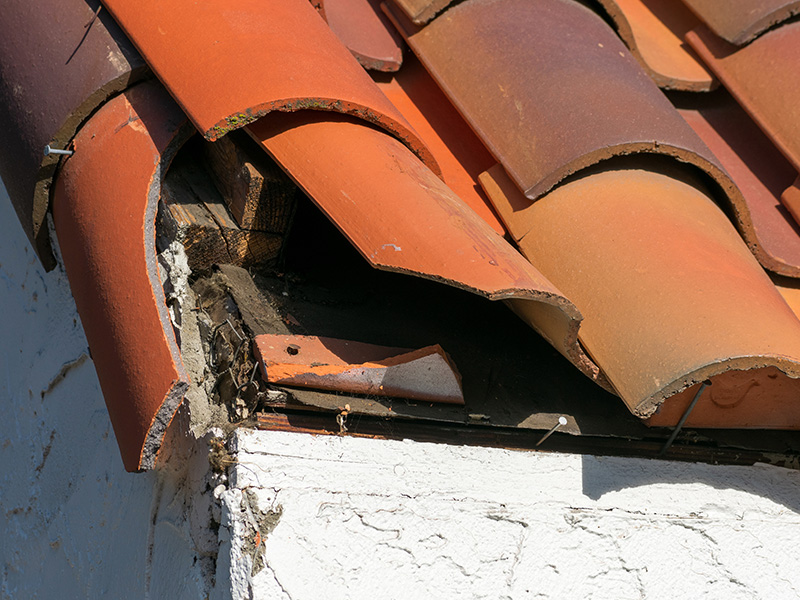Clutter In Your Home? Heres Why Pests Love It
Do you ever feel like, no matter what you do, pests still find ways to get into your home? Do you clean regularly, mop up spills, keep food in sealed containers, and still have mice, rats, and cockroaches making themselves at home inside your home? The problem might be hiding right in plain sight. We’re talking about clutter. Today, we’ll look at how clutter can attract pests and share specific examples of pest problems that can grow in cluttered environments. Plus, we’ll discuss specific areas of a home where clutter is more problematic. As always, we’re here if you need us. Northwest Exterminating is your local source for expert pest control services in Phoenix, Tucson, and Southern Arizona.

Why clutter attracts pests
It is easy for clutter to accumulate. Life gets busy. But clutter invites pest problems in many ways. Here are some examples:
- Hiding spots
Clutter provides places for pests to hide and nest without being disturbed. Many pests prefer environments that offer seclusion. - Tight spaces
Many pests are attracted to tight spaces. The scientific name for this behavior is thigmotaxis. For example, a cockroach will tuck itself into a space where its belly and back are touching two hard surfaces at the same time. - Protection from predators
Junk piles create safe havens where pests feel secure. - Access to food and water
Cluttered areas often conceal crumbs, spills, or pet food that pests can feast on. In some cases, the clutter itself is food. A good example of this is a pile of cardboard boxes. Many pests can feed on the cellulose in paper and cardboard. - Moisture buildup
Clutter in damp areas such as basements or bathrooms attracts moisture-loving pests. Stacked objects trap moisture and humidity.
How clutter contributes to specific pest problems
Let’s take a closer look at how clutter invites certain pests into a home. Here are a few specific examples:
Rodents
- Out of sight and out of mind
Mice and rats prefer undisturbed, cluttered spaces for nesting. Piles of old newspapers or forgotten boxes are perfect for them. - Building materials
Rodents collect soft things for their nests. They enjoy exploring clutter that includes clothing, paper products, foam cushions, pillows, and other objects with soft materials. - Easy travel
Cluttered areas allow mice and rats to travel unseen. This makes it harder to notice an infestation as it grows.
Cockroaches
- Thriving in clutter
Cockroaches love clutter because they can often find plentiful food options. - Hiding in cracks
Cockroaches hide in small cracks or in between items like cardboard boxes. This makes them hard to spot. - The scent of decay
Cockroaches are drawn to the smell of decay on laundry, particularly laundry that has been sitting for a long time.
Other insects
- Hidden spills
A cluttered space can hide food granules, which are easily seen by ants and other insects that explore these spaces. - Moisture issues
Clutter can trap moisture and cause paper to soften. Conditions like this can attract earwigs and other pests that feed on cellulose. Softened paper is easier to eat. - Clutter can obscure dust
Some pests, like carpet beetles and dust mites, feed on dust, which contains organic material.
Along with providing specific conditions that can attract pests, cluttered areas also make it hard to apply pest control.
Common areas where clutter leads to pest problems
You might be wondering where clutter can cause the most trouble. Here are some hotspots:
- Kitchens
Cluttered counters, cupboards, and pantries attract roaches and mice looking for food. - Attics and storage rooms
These low-traffic areas, usually filled with stored items, are ideal for rodent nests and insect harborage. - Garages and sheds
Pests shelter in stored boxes, tools, or unused furniture, especially when these areas are cluttered.
Tips to reduce clutter and prevent pests
Okay. Clutter is a problem. What can you do to keep pests from turning your home into theirs?
- Declutter regularly
Make it a habit to sort through your belongings. Donate or discard items you no longer need. - Use proper storage
Store items in sealed plastic containers instead of cardboard boxes. This keeps pests out and your items safe. - Maintain cleanliness
Keep food areas clean and free of crumbs or spills. Even tiny food particles can attract pests. - Reduce moisture
Fix leaks and ensure proper ventilation to reduce moisture buildup that attracts pests. - Seal entry points
Inspect and seal cracks and gaps in walls and floors, and around doors, to limit pest entry points.
When professional pest control makes sense
While reducing clutter is a significant step in pest management, sometimes it’s not enough to keep persistent pests at bay. That’s where we come in.
At Northwest Exterminating, we offer comprehensive home pest control solutions to tackle your pest problems:
- Thorough inspections
We evaluate your home to identify all potential hiding spots and entry points. - Strategic treatments
Using control materials that pests can’t detect, we target them where they live and breed. - Exclusion techniques
We offer pest exclusion services to prevent pests from entering your home. - Ongoing support
Our team provides tips and services to keep your home pest-free all year long.
Don’t let clutter give insects and rodents the upper hand. Take control today. If you’re in the Phoenix or Tucson metros and are searching for a trusted pest control company to take care of your pest infestations, we are the smart choice!

Testimonials
Request Your FREE Estimate
Have questions or need help getting rid of pests? Simply complete the form below or give us a call!
Pest Solutions For Homes & Businesses
Northwest Exterminating provides pest control services in the Phoenix metro and Tucson, as well as throughout Southern Arizona, that target pests found in our region's unique desert environment. We promise personalized service and state-of-the-art techniques for all your exterminating needs.
Any Pest, On Time, Guaranteed.



